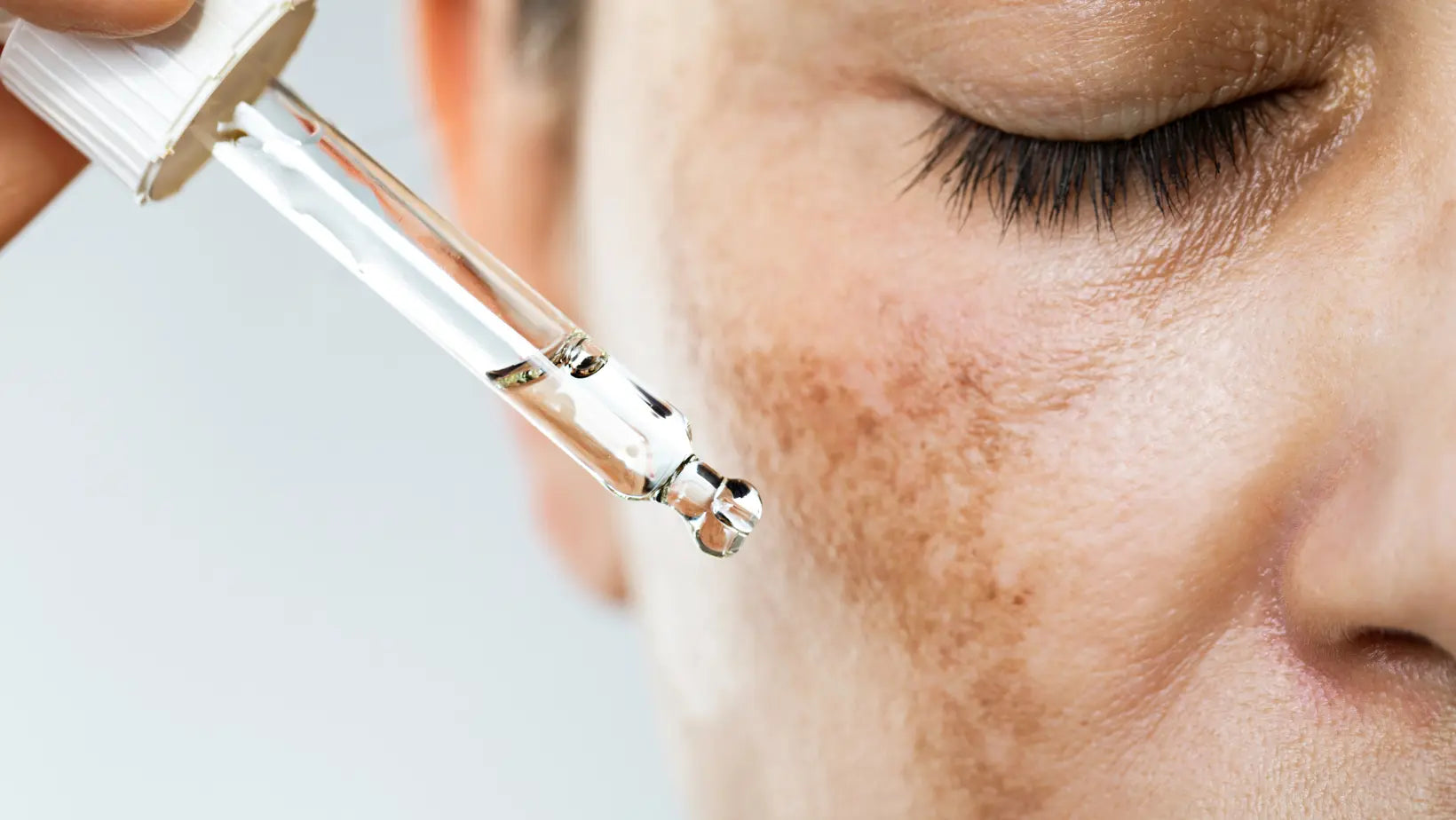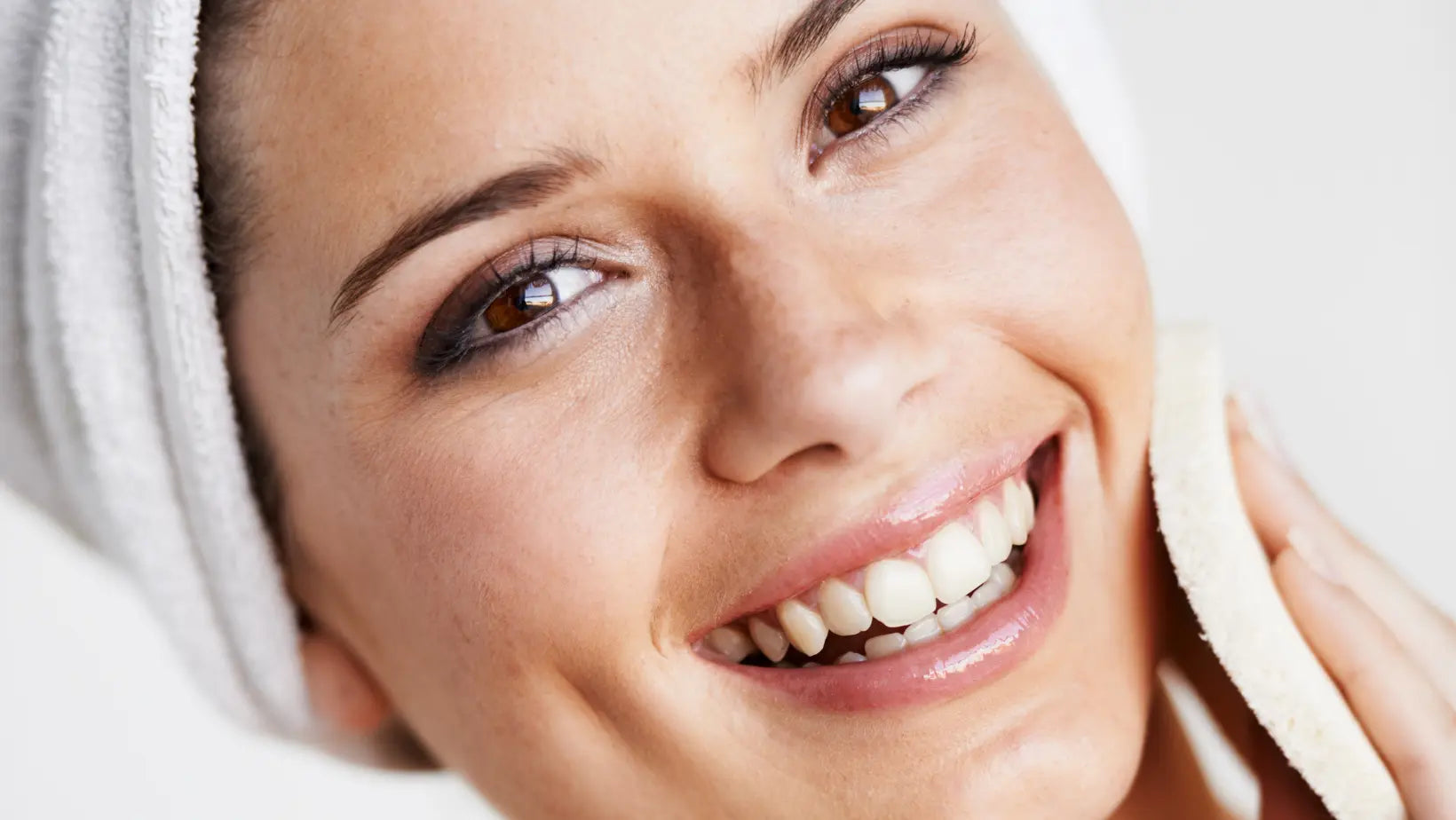
Why do pigmentation spots appear and how can you treat them
Pigment spots, also known as hyperpigmentation, are areas of the skin that become darker in color than the surrounding skin. These spots are caused by an excessive production of melanin, the pigment that gives color to the skin. Hyperpigmentation can appear in various forms, including melasma, sun spots (lentigines), and post-inflammatory hyperpigmentation. These spots can be aesthetically unpleasant and may affect the self-confidence of the individuals who develop them.
It is essential to understand the causes of pigmentation spots and the available treatment methods to maintain healthy and even skin. Correctly identifying the factors that contribute to the appearance of these spots helps us adopt effective preventive measures and choose the right treatments. Pigmentation spots are not just a cosmetic issue; they can also indicate underlying skin problems, such as damage caused by sun exposure or hormonal imbalances. Therefore, proper information and adopting an appropriate care routine are crucial to prevent and treat hyperpigmentation.
In this article, we will find out why pigment spots appear and how we can treat them effectively. Our goal is to provide a clear and comprehensive understanding of pigment spots, so that you can make the best decisions for your skin care.
What are pigment spots?
Pigment spots, also known as hyperpigmentation, are areas of the skin that become darker in color than the surrounding skin. This discoloration is caused by an overproduction of melanin, the natural pigment that gives color to the skin, hair, and eyes. Melanin is produced by cells called melanocytes and can become excessive in certain areas for various reasons, thus causing the appearance of pigment spots.
Pigment spots can appear on any part of the body, but they are more common on sun-exposed areas such as the face, hands, and arms. They can vary in size and shape and can range in shade from light brown to black, depending on skin tone and the severity of hyperpigmentation.
Types of pigmented spots
There are several types of pigmentation spots, each having distinct causes and characteristics. Here are some of the most common types:
1. Melasma

Melasma appears as large brown spots, usually on the face. It is commonly found on the forehead, cheeks, nose, and above the upper lip.
Causes: This is often caused by hormonal changes, such as those during pregnancy (also known as "pregnancy mask") or as a result of using oral contraceptives or hormone therapy. Sun exposure worsens melasma because UV rays stimulate melanin production.
2. Solar spots (solar lentigo)
Sun spots are small, round, brown or black in color, and appear on areas of the skin that have been exposed to the sun over time, such as the face, hands, shoulders, and arms.
Causes: These spots are the result of prolonged and repeated exposure to the sun's ultraviolet (UV) rays, which lead to the accumulation of melanin in the skin. They are more common in middle-aged and elderly people, but can also appear in younger individuals who are excessively exposed to the sun.
3. Post-inflammatory hyperpigmentation (PIH)
PIH appears as flat spots, brown or black in color, that remain after the healing of a skin lesion, such as acne, eczema, psoriasis, or traumatic injuries.
Causes: These spots are caused by skin inflammation that stimulates melanin production. After the lesion heals, excess melanin remains in the affected area, thus causing hyperpigmentation. PIH is more common in people with darker skin because they have a higher number of active melanocytes.
Causes of pigmentation spots
Sun exposure
Exposure to the sun's ultraviolet (UV) rays is one of the main causes of pigmentation spots. UV rays stimulate melanocytes, the cells responsible for producing melanin, the pigment that gives skin its color. When the skin is exposed to the sun for long periods, melanocytes produce large amounts of melanin, which can lead to the appearance of pigmentation spots, also known as sun spots or lentigines. Protecting the skin from the sun by using SPF products daily is essential to prevent these spots.
Hormonal changes
Hormonal changes play a significant role in the development of pigmentation spots. Melasma, for example, is often associated with hormonal fluctuations that occur during pregnancy, known as the "mask of pregnancy," or following the use of oral contraceptives and hormone therapy. Hormones can stimulate melanin production, leading to the appearance of brown spots on the face, especially on the cheeks, forehead, and above the upper lip. Managing sun exposure and using appropriate products can help minimize the effects of these hormonal changes.
Inflammations and injuries
Acne, cuts, burns, and other skin injuries can leave behind pigmented spots known as post-inflammatory hyperpigmentation (PIH). This type of hyperpigmentation occurs when inflammation in the skin stimulates melanin production, and after the lesion heals, excess pigment remains in the affected area. People with darker skin tones are more prone to PIH because they have a higher number of active melanocytes. Proper treatment of inflammations and protecting the affected skin are essential for preventing PIH.
Skin aging

Natural aging of the skin is another factor that contributes to the appearance of pigmentation spots. As we age, the skin loses its ability to regenerate as efficiently, and cumulative exposure to the sun and environmental factors leads to skin damage. This can result in the appearance of pigmentation spots, also known as age spots or senile lentigines. Skincare through the use of anti-aging products and sun protection can help prevent and reduce these spots.
Genetic factors
Genetic predisposition also plays an important role in the appearance of pigmentation spots. If your parents or other family members have pigmentation spots, you may be more likely to develop them as well. Genetic factors can influence the number and activity of melanocytes, thus determining how much melanin your skin produces. Understanding your genetic predisposition can help you adopt appropriate preventive measures and use skincare products that minimize the risk of pigmentation spots appearing.
How to prevent pigmentation spots
Sun protection
Sun protection is essential for preventing pigmentation spots. Exposure to ultraviolet (UV) rays is one of the main causes of hyperpigmentation, so it is crucial to use products with sun protection factor (SPF) daily. Choose a product with SPF 30 or higher, with a broad spectrum, that protects against UVA and UVB rays. Apply it generously on the face and other areas exposed to the sun, even on cloudy days or during winter. Reapply sun protection every two hours if you are directly exposed to the sun or after swimming and sweating to maintain the effectiveness of the protection.
Proper skin care
To prevent the appearance of pigmentation spots, it is important to maintain skin health through an appropriate care routine. Use gentle cleansing products that do not irritate the skin and effectively remove impurities. Choose serums and moisturizing creams containing active ingredients such as vitamin C, niacinamide, and hyaluronic acid to keep the skin hydrated and prevent inflammation. Regular, but not excessive, exfoliation helps remove dead cells and prevent clogged pores, which can lead to the appearance of pigmentation spots.
Healthy lifestyle
A healthy lifestyle significantly contributes to maintaining skin health and preventing pigmentation spots. A balanced diet, rich in antioxidants, vitamins, and minerals, helps maintain the skin's elasticity and radiance. Adequate water intake is essential for skin hydration and toxin elimination. Avoid smoking and excessive alcohol consumption, which can accelerate the aging process and negatively affect skin health. Additionally, regular physical exercise improves blood circulation and promotes healthy, glowing skin.
Treatments for pigmentation spots
Topical treatments
The use of creams and serums with active ingredients can help fade pigmentation spots and even out the complexion. Among the most effective ingredients are:
- Vitamin C: A powerful antioxidant that brightens the skin and reduces pigmentation spots.
- Niacinamide: Helps regulate sebum production, reduces inflammation, and evens out skin tone.
- Kojic acid: Inhibits melanin production and helps fade pigmentation spots.
Apply these products according to the instructions on the packaging and integrate them into your daily care routine for optimal results.
Dermatological procedures
For more severe cases of hyperpigmentation, consulting a dermatologist may be necessary. Dermatologists can recommend various procedures to treat pigmentation spots, such as:
- Chemical peels: These use acids to exfoliate the top layer of the skin, revealing brighter and more even skin.
- Laser therapy: The laser can target and destroy pigmented cells, thereby reducing the appearance of spots.
- Microdermabrasion: A procedure that exfoliates the skin using fine crystals or a diamond-tipped device, removing dead cells and stimulating cell regeneration.
These treatments must be performed by professionals and often require multiple sessions to achieve optimal results.
Natural remedies

There are also natural remedies that can help fade pigmentation spots, although their effects may vary. These include:
- Aloe vera gel: It has anti-inflammatory properties and helps in skin regeneration.
- Lemon juice: Contains citric acid, which can help lighten pigmentation spots, but should be used with caution as it can be irritating.
- Rosehip oil: Rich in vitamins and fatty acids, this oil helps regenerate the skin and fade spots.
Use these remedies with care and test them on a small area of skin to prevent adverse reactions.
Our recommendation: Products from the Royal Rich range
To effectively treat pigmentation spots and achieve an even and radiant complexion, we confidently recommend the products from the Royal Rich range. These products are formulated with high-quality natural ingredients and advanced technologies to provide effective and safe solutions for various skin conditions. One of the top products in this range is the Royal & Rich Whitening Cream.
Royal & Rich Whitening Cream
This unique cream is rich in vitamins and essential oils, which help reduce the appearance of pigmentation spots and ensure an even and lighter skin tone. Its advanced formula protects the skin from damage caused by exposure to UV rays, aging, pregnancy, and irritations, providing a complete solution for the care of pigmented complexion.
Key ingredient and benefits:
- Glycolic acid: This active ingredient improves the appearance of the skin, helps treat scars, acne, and wrinkles, giving the skin an even tone and a smooth texture.
- Grape seed essential oil: Rich in antioxidants, this essential oil helps protect the skin against free radicals and promotes cell regeneration, reducing pigmentation spots.
- Lactic acid: This gentle acid gently exfoliates the skin, removing dead cells and encouraging cell renewal for a brighter and more even complexion.
Additional benefits:
- Vitamins and natural extracts: The cream contains a complex of vitamins and natural extracts that help cleanse and lighten dark spots caused by the sun, aging, pregnancy, and skin irritations.
- UV Protection: The formula helps protect the skin from the harmful effects of UV rays, preventing the appearance of new pigmentation spots.
- Hydration and regeneration: The cream deeply hydrates the skin and supports the natural regeneration process, leaving the skin soft, smooth, and radiant.
How to use Royal & Rich Whitening Cream
1. Clean your face well with a gentle cleansing product.
2. Apply a small amount of cream to the areas affected by pigmentation spots.
3. Gently massage the cream into the skin until it is completely absorbed.
4. Use the cream daily, in the morning and evening, for optimal results.
5. Protect yourself from the sun by using an SPF cream throughout the day to prevent the appearance of new pigmented spots.

In conclusion, pigmentation spots can be a challenge for many of us, but understanding the causes and adopting appropriate prevention and treatment measures can make a significant difference. Daily sun protection, a proper skincare routine, and a healthy lifestyle are essential for maintaining an even and radiant complexion. Additionally, using specially formulated skincare products to treat pigmentation spots can accelerate their fading process and improve the overall appearance of the skin.
Don't wait for pigmentation spots to affect your self-confidence! Try the products from the Royal Rich range to transform your skincare routine. Formulated with natural ingredients and cutting-edge technologies, these products are specially designed to provide visible and lasting results. Visit our website and discover now the perfect solutions for flawless skin!



Leave a comment
This site is protected by hCaptcha and the hCaptcha Privacy Policy and Terms of Service apply.